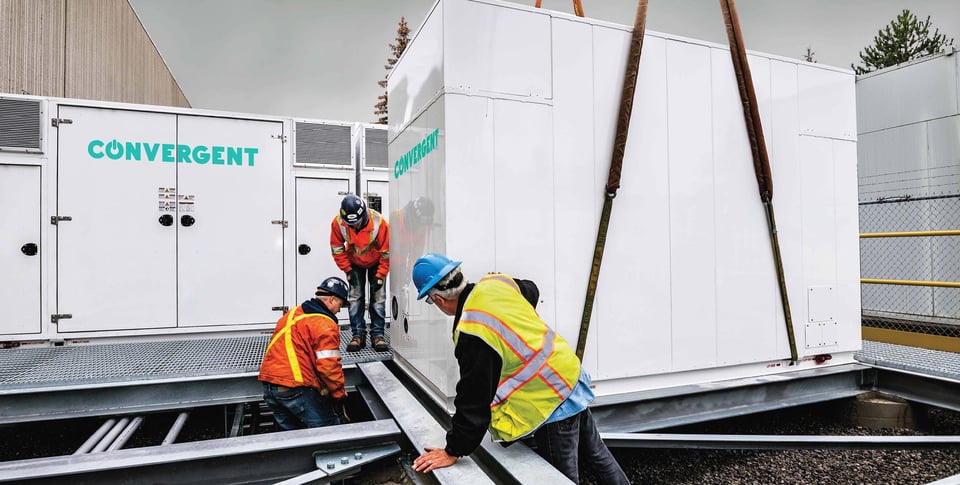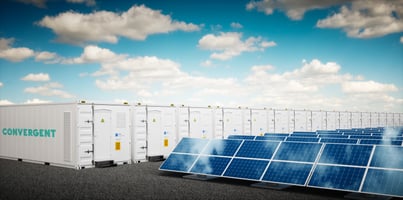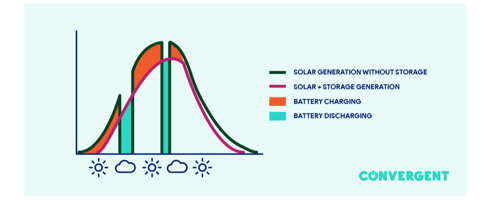Navigating California's Energy Transition: The Role of Energy Storage in the New 24-Hour Slice of Day Framework

California is at the forefront of innovative energy management, constantly seeking new ways to enhance the electric grid’s reliability and efficiency. One promising new approach that California is currently testing is the “24-Hour Slice of Day” framework recently adopted by the California Public Utilities Commission (CPUC). This mechanism aims to support the state's dynamic rising energy load as more and more renewable supply comes online, ensuring that California can meet its growing energy demands.
But what exactly does this framework entail, and how does it work? Let's dive into the basics.
The "24-Hour Slice of Day" framework divides each day of the month into 24 one-hour segments, focusing on the day with the highest energy demand. Each energy provider in California, such as a utility, has its own mix of energy sources, and this system requires each provider to have a detailed hourly energy plan to ensure they can meet expected energy use, plus a safety margin for every hour of that high-demand day with their mix of energy sources.
Additionally, the framework ensures that there is enough energy capacity and requires that all energy providers can operate at full capacity for the entire 24 hours of the highest-demand day. This approach helps manage the ups and downs of energy use and supply while improving the efficiency of California's energy system.
In this blog, we’ll explore why California is implementing this innovative framework, the challenges associated, and how battery storage systems can support community choice aggregators and utilities looking to meet the 24-Hour Slice of Day capacity requirements and more.
The Clean Energy Transition and Climate Crisis: Driving Forces Behind California’s 24-Hour Slice of Day Framework
California’s “24-Hour Slide of Day” framework was designed to help ensure there is enough capacity to meet demand.
Ensuring there is enough capacity to meet demand has become increasingly challenging in California, which generates about 25% of its electricity from renewable energy. The amount of renewable energy in particular creates a challenge in forecasting given that wind and solar generation are dependent on how much the wind is blowing or the sun is shining.

In addition to a sizable and growing amount of renewable energy on the grid, California and its electric grid are also highly vulnerable to the impacts of climate change, particularly wildfires.
Insulating California’s grid against the intermittency of renewable energy and the growing impacts of climate change is not only a planning challenge, but also a costly endeavor. These factors will only increase California’s electricity costs, which are already at least twice the national average and continuing to rise.
How Energy Storage Can Help Meet 24-Hour Slide of Day Capacity Requirements
As California’s Community Choice Aggregators and utilities look for ways to meet the 24-Hour Slice of Day framework, energy storage offers a way to do so. Energy storage (typically in the form of a battery) is one of the best technologies available to meet 24-hour Slice of Day capacity requirements. Unlike other technologies, battery storage can be discharged at any time.
Energy storage systems allow electricity to be stored—and then discharged—at the most strategic times. Today, Lithium-ion batteries, the same batteries that are used in cell phones and electric vehicles, are the most commonly used type of energy storage. Like the batteries in your cell phone, commercial-, industrial-, and utility-scale battery energy storage systems can be charged with electricity from the grid (or from renewable resources), stored, and discharged when there is a deficit in supply or when energy is most expensive. Increasingly, battery energy storage is being paired with solar PV, which maximizes the value of solar energy to the grid (i.e., storing solar-generated electricity for when it is cloudy or after the sun sets).
Navigating Challenges Within the 24-Hour Slice of Day Framework
While California's "24-Hour Slice of Day" framework promises a more reliable and efficient energy grid, it comes with its own set of challenges for community choice aggregators and utilities tasked with predicting load and meeting peak demand.
- First, accurately predicting energy demand for every hour of the day, especially on the highest-demand day of the month, is a complex task that requires sophisticated forecasting tools and data analysis.
- Second, ensuring that all energy providers comply with the new requirements and can offer their full capacity for 24 hours straight involves substantial regulatory oversight and coordination.
- Third, integrating a battery energy storage system onto the grid requires expertise. The decision about when to discharge an energy storage or solar-plus-storage system is determined by both intrinsic and extrinsic factors (e.g., customer load characteristics, utility rate tariffs, wholesale market pricing, grid peak times, weather forecasts). This is one of the reasons that community choice aggregators and utilities choose to partner with developers to procure, operate, and maintain a battery storage or solar-plus-storage system.

Despite these ongoing challenges, the long-term benefits of a more resilient and sustainable energy system make the 24-Hour Slice of Day framework an important step forward for California’s electric grid.
The Value of Energy Storage Beyond its Role in the 24-Hour Slice of Day
Energy Storage is more than a tool to support the 24-Hour Slice of Day framework. In fact, it is often referred to as the “Swiss Army knife” of solutions for our aging electricity grid and an important tool for community choice aggregators and utilities to continue delivering cost-effective, reliable, more sustainable energy to customers.
One can charge an energy storage system when there is an excess of renewable energy generation (i.e. solar power) that would typically get lost. An energy storage system also has the ability to provide other critical services such as the regulation of the grid’s frequency. Intelligently dispatched energy storage systems can also avoid placing additional strain on existing infrastructure.
Last but not least, battery storage produces zero on-site greenhouse gas emissions and may be deployed to augment peaking capacity (the grid’s peak demand) in place of carbon-intensive natural gas peaker plants, which can quickly ramp up production to meet the needs of the grid. If we can rely on storing renewable energy to support the grid, we can reduce our greenhouse gas emissions and have access to renewable energy when the grid needs it most.
Learn More and Connect with Convergent
The future of energy depends on our ability to store it. Integrating technologies like energy storage within the 24-Hour Slice of Day framework is crucial for grid flexibility and resilience, enabling California to effectively manage its energy demands amidst evolving environmental challenges.
Partnering with a third-party battery storage developer (like Convergent Energy and Power!) allows community choice aggregators and utilities to leverage the company’s industry expertise without bearing the full cost and complexity of developing and operating a battery storage or solar-plus-storage system on your own.

Convergent has been in the energy storage industry since its infancy more than a decade ago. Throughout that time, we’ve gained experience and expertise, working closely with community choice aggregators, utilities, and businesses to take the hassle out of energy storage by building, owning, and operating systems on their behalf. We’re proud to say that it has never been easier to integrate energy storage into your organization, and the time has never been better.
To learn more about how energy storage systems can benefit your community, schedule a free, no-obligation introductory call with our team today.





